| Home | Start key | Fact sheets | Glossary | Common flowers | ||
Erica L.Ericaceae |
||||||
Alternate trade names
heather Common names
heath, heather Species cultivated
Erica baccans L. E. bicolor Thunb.1 E. borboniifolia Salisb.1 E. campanularis Salisb. E. canaliculata Andrews (=E. melanthera Lodd. non L.) E. coccinea L. E. corifolia L.1 E. crenata E. Mey. ex Benth.1 E. cubica L. E. cyathiformis Salisb.1 E. daphniflora Salisb. E. deliciosa H.L. Wendl. ex Benth.1 E. ericoides (L.) E.G.H. Oliv.1 (=Blaeria ericoides L.1) E. fastigiata L. E. filipendula Benth.1 E. imbricata L.1 E. irregularis Benth.1 E. leucanthera L. f.1 E. lusitanica Rudolphi (=E. codonodes Lindl.) E. melanthera L. E. ovina Klotzsch ex Benth.1 E. patersonia Andrews E. perspicua Wendl. E. plukenetii L. E. sessiliflora L. E. subdivaricata Berg (=E. persoluta L.) Origin
South Africa (most species); North Africa, Europe. Brief characterization
Linear, needle-like, commonly whorled leaves with strongly revolute margins; inflorescence many-flowered, flowers in axils or terminal clusters or racemes; small (0.2-4 cm long) flowers with 4-parted calyx, 4 lobed corolla with petals usually fused for over half its length; stamens usually 8; anthers poricidal, with or without basal appendages. Cultivar and/or species variation
Leaves rarely opposite, flowers variously arranged, in terminal clusters on main or lateral branchlets, axillary, or in umbels, panicles or racemes; calyx small, or large, colored, and showy; corolla tube cylindrical, urceolate, ovoid, globose, funnelform, or campanulate, often strongly constricted at throat, shortly lobed; flowers commonly pink, red, or purple, but also white, yellow, or green; stamens and style included or exserted. Countries exporting
South Africa. |

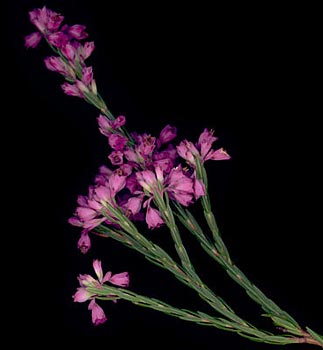

 |
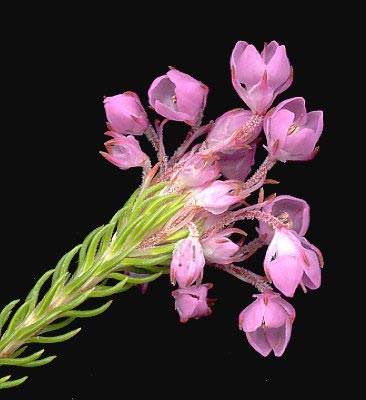 |
|
| Erica cubica: flowering
branch
Photo: © Peter Swart 2002 |
Erica cubica: flowering
branch, closeup
Photo: © Peter Swart 2002 |
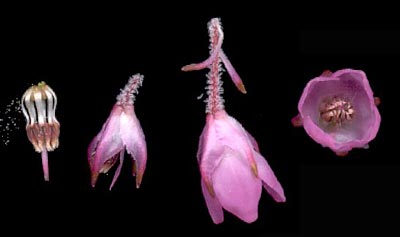

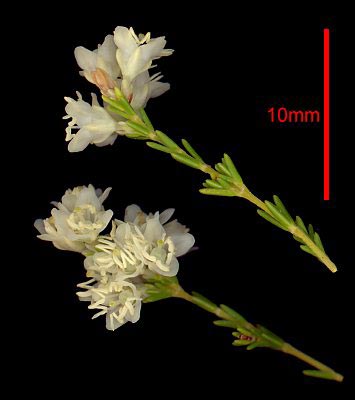
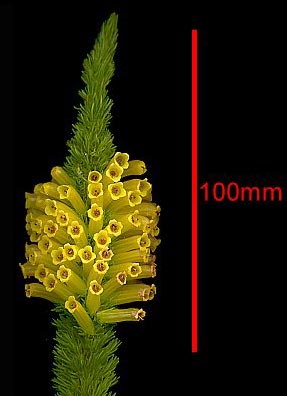 |
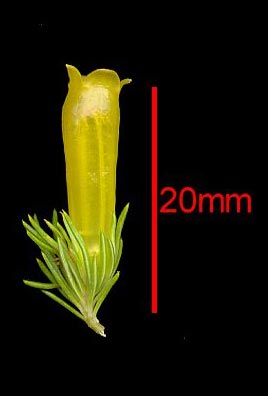 |
|
| Erica patersonia: flowering
branch
Photo: © Peter Swart 2002 |
Erica patersonia: flower
and leaves
Photo: © Peter Swart 2002 |
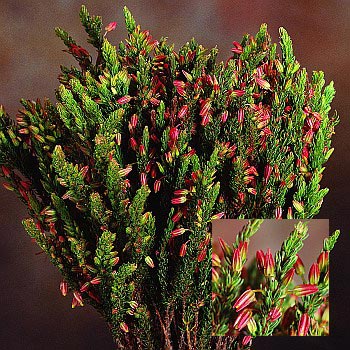 |
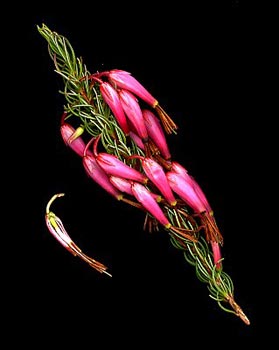 |
|
| Erica plukenetii
Photo: © Dolf Schumann, SAPPEX Cape Flora brochure |
Erica plukenetii: flowering
branch
Photo: © Peter Swart 2002 |

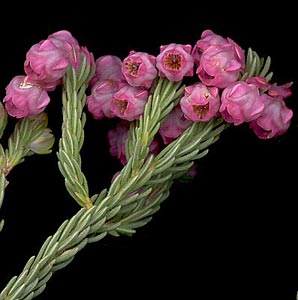 |
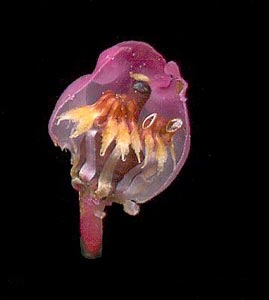 |
|
| Erica baccans: flowering
branch
Photo: © Peter Swart 2002 |
Erica baccans: flower,
half of corolla removed; note poricidal anthers
Photo: © Peter Swart 2002 |
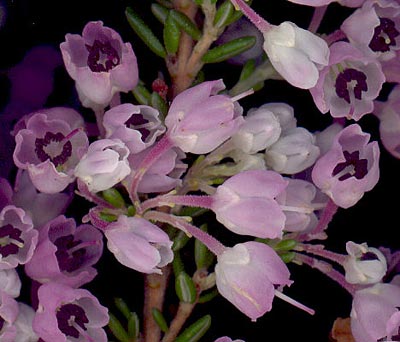
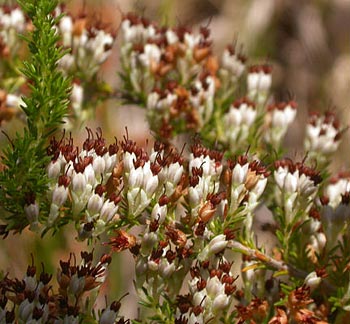 |
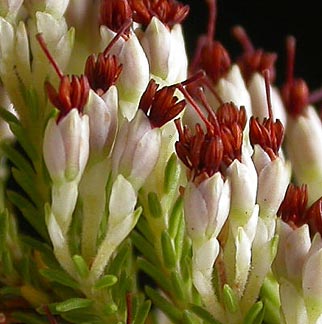 |
|
| Erica imbricata: flowering
branches
Photo: © Peter Swart 2002 |
Erica imbricata: flowers
Photo: © Peter Swart 2002 |

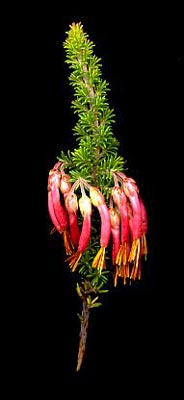
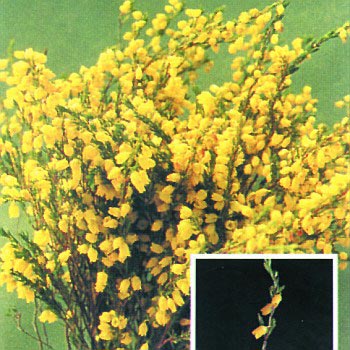

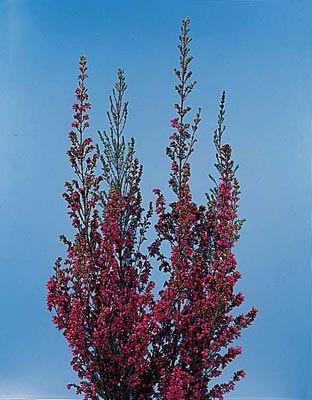
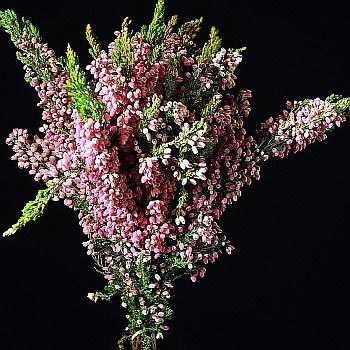
 |
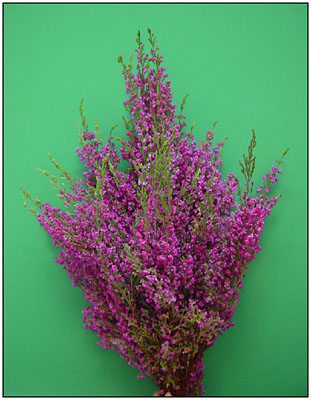 |
|
| Erica codonodes 'Spanish
Heather'
Photo: © California Cut Flower Commission |
Erica Spring Heather
Photo: © Ken McPheeters, ITCS, University of Illinois |